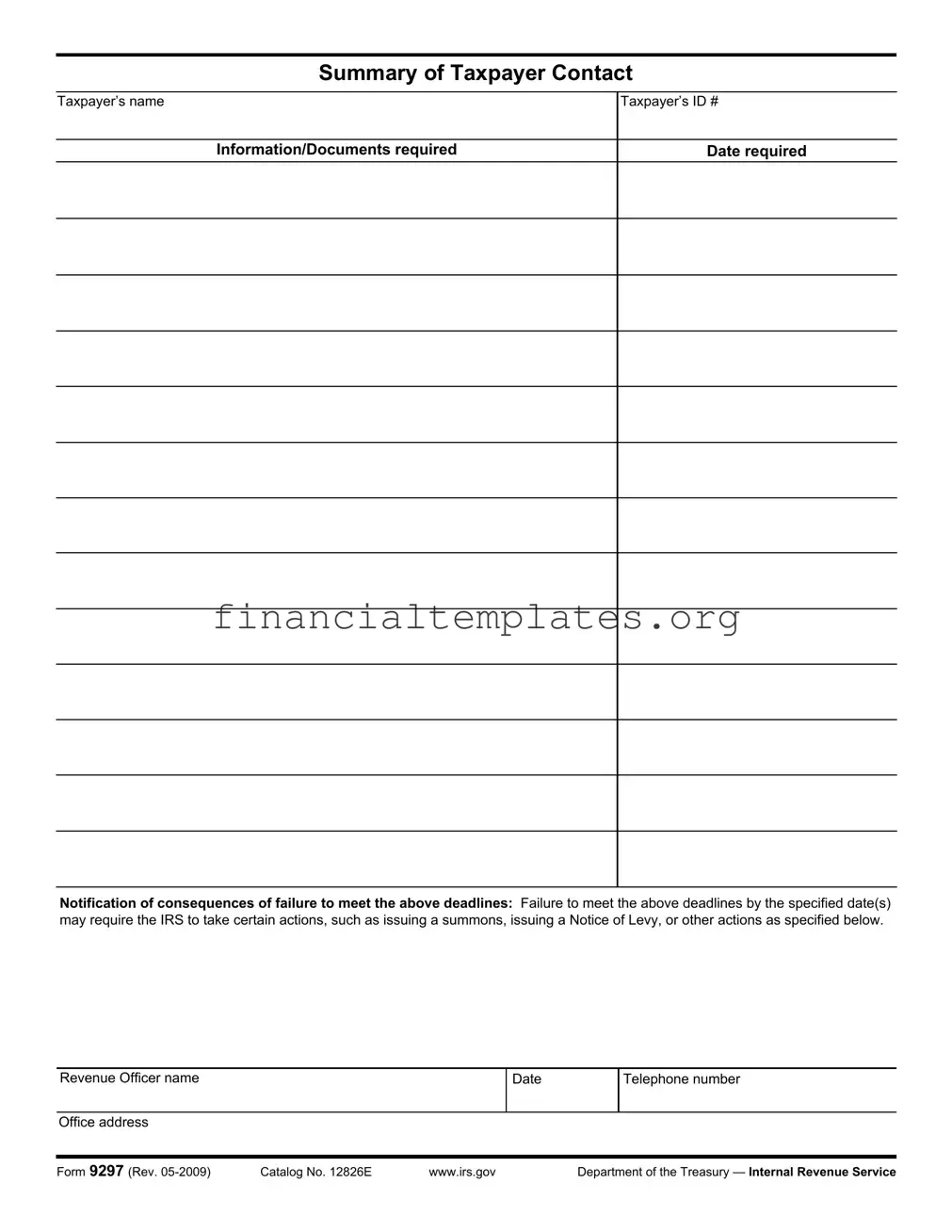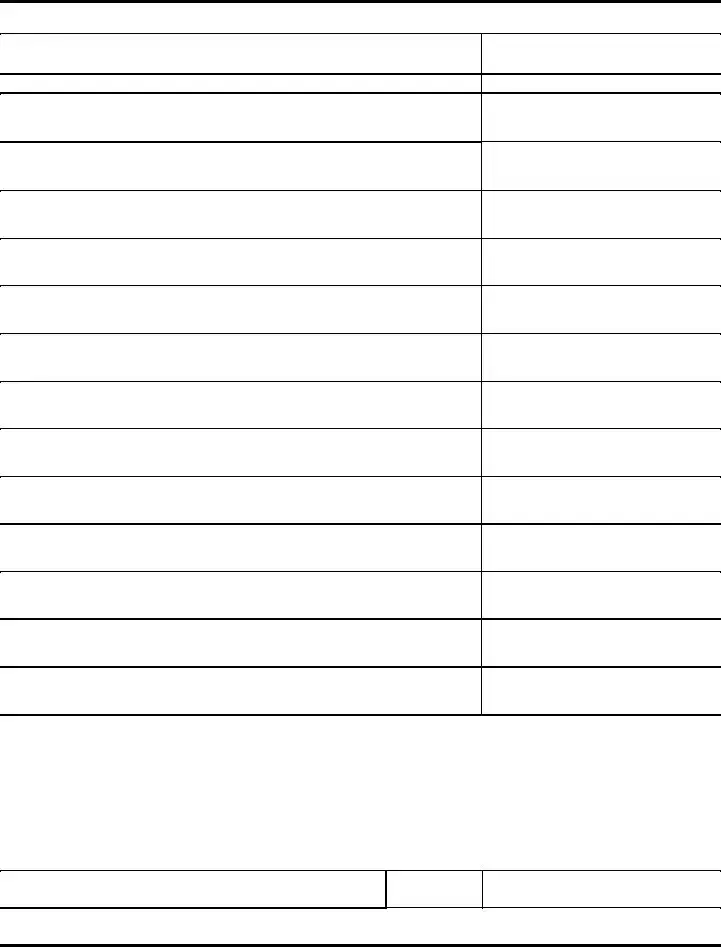The Form 4868, known as the Application for Automatic Extension of Time To File U.S. Individual Income Tax Return, shares a common purpose with the IRS Form 9297 in assisting taxpayers in managing their filing obligations. While Form 9297 outlines the specific documents or information required from the taxpayer and the consequences of not providing them by the specified deadlines, Form 4868 serves to provide taxpayers additional time to file their tax returns. It similarly underscores the importance of meeting IRS deadlines to avoid penalties or further IRS action.
Form 2848, Power of Attorney and Declaration of Representative, is similar to Form 9297 in that it involves precise taxpayer information and stipulates the authorization of individuals to take specific actions on behalf of the taxpayer. Where Form 9297 provides a summary of what is required from the taxpayer including deadlines for submission, Form 2848 designates another person to handle the taxpayer’s affairs with the IRS, thereby making it crucial in circumstances where direct taxpayer action or response is not feasible.
Another related document is the Form 433-F, Collection Information Statement, which, like Form 9297, is used by the IRS to gather necessary information from taxpayers. Form 433-F is focused on collecting financial information to determine how the taxpayer can settle outstanding tax liabilities. The connection lies in the necessity for timely and accurate information submission to the IRS to prevent consequential actions, such as those highlighted in Form 9297’s notification section.
The Notice of Deficiency, also referred to as Letter 3219, bears resemblance to the IRS Form 9297 since both documents are part of the IRS's administrative processes to inform taxpayers about issues with their accounts. While the Notice of Deficiency is a formal declaration by the IRS of taxes owed due to discrepancies found during an audit, Form 9297 is a preemptive measure to avoid such discrepancies from leading to a Notice of Deficiency, by requesting specific information or documents by a certain deadline.
Form 656, Offer in Compromise, relates to Form 9297 in that it represents an option for taxpayers to resolve their tax liabilities. Form 9297 alerts taxpayers to the need for specific actions by certain deadlines to prevent IRS enforcement actions. In contrast, Form 656 allows taxpayers to negotiate their tax debt under specific circumstances. Both forms signify a critical engagement with the IRS to avoid or mitigate penalties or additional tax obligations.
Lastly, the CP2000 Notice, or Underreported Income Notice, is akin to Form 9297 as it is a part of the IRS’s process to inform taxpayers about issues with their tax returns. The CP2000 Notice identifies discrepancies between the income information the IRS has received and what the taxpayer has reported, requesting additional information or correction. Form 9297 similarly requires taxpayers to provide necessary documentation by specified deadlines to resolve issues potentially preventing such discrepancies.


